My first role at Monsanto was as a Production Associate at a soybean seed production facility. This was an entry-level management position with responsibilities that included overseeing our in-house quality lab, performing quality tests, managing data, field inspecting, and product stewardship. That’s a lot of fancy words for quality assurance. It was basically my job to make sure what we were putting into our bags adhered to Monsanto’s quality standards.
How do we “produce” soybeans?
As a production facility, my site was one of many that grew, conditioned (cleaned), and packaged soybeans. Yes, the GMO kind. No, syringes and lab coats aren’t involved. Soybeans seeds are produced in open fields just like the non-GMO and organic kinds. In fact, the site I worked at was responsible for about 56,000 acres of soybean seed production. That produced enough seeds for farmers to plant nearly 2 million acres the following year!
Seed companies like mine can’t grow all that seed without help and that’s where farmers come in! Seed production sites work closely with hundreds of farmers who plant some of their fields specifically for seed production. This means instead of taking their harvest to elevators for use in food, feed, and other products, the seeds are brought to the production facility for processing.
(Special thanks to Tom Rosengren for letting me snap the picture of his shiny new rig!)
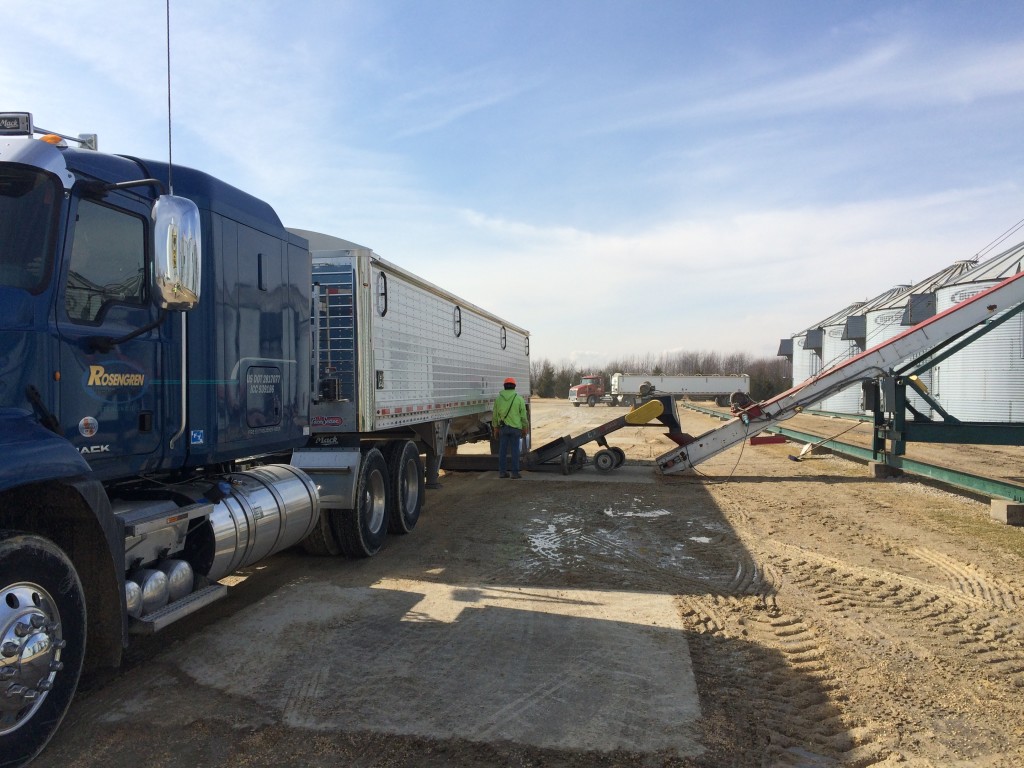
Truck unloading beans at our facility
Once the seeds are at the facility, they’re conditioned and packaged. “Conditioning” is the process by which we remove unwanted debris, excessively large/small seeds, weed seeds, and damaged seeds. This is important because farmers need a clean, uniform product to run through their planters. The equipment used to do this is large and expensive which is one of the reasons farmers may prefer to buy new seed each year rather than saving their own.
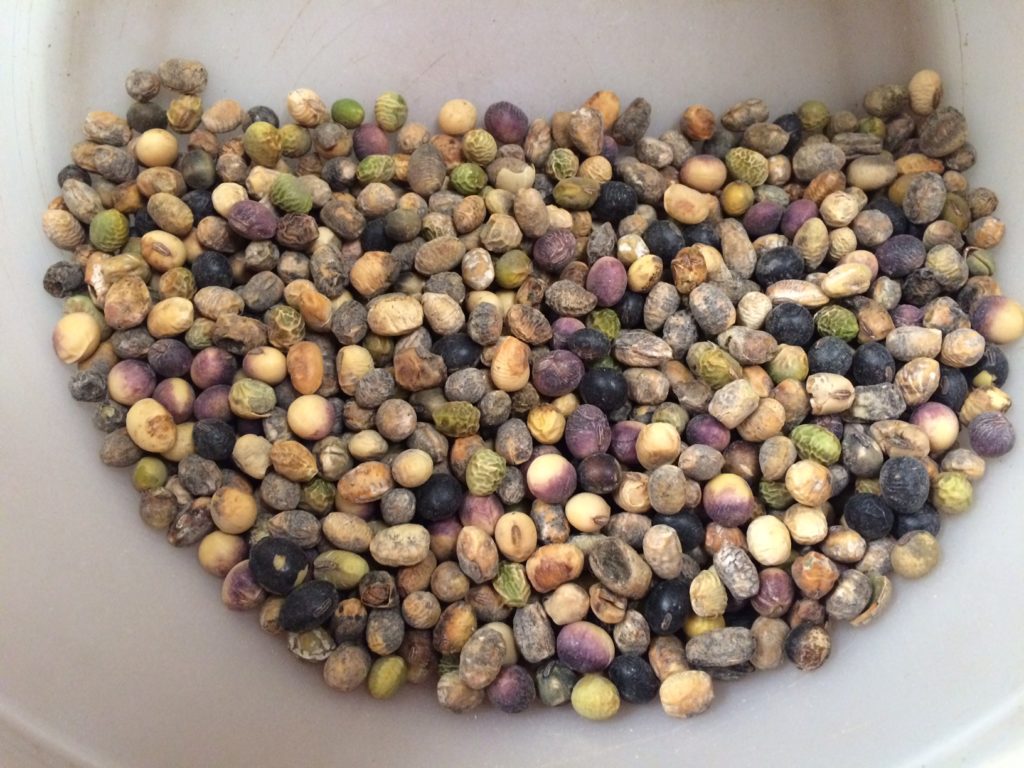
Here’s an example of some of the seeds removed during processing
Field inspecting
Another of my responsibilities was helping our farmers monitor their fields to ensure they’d have quality product to harvest. Several field inspections are performed throughout the growing season where we take “stand counts” to help estimate yields, monitor for excessive weeds, make sure there is adequate spacing from neighboring fields, and that the field is “pure” with no off-types that could taint the purity of the variety.
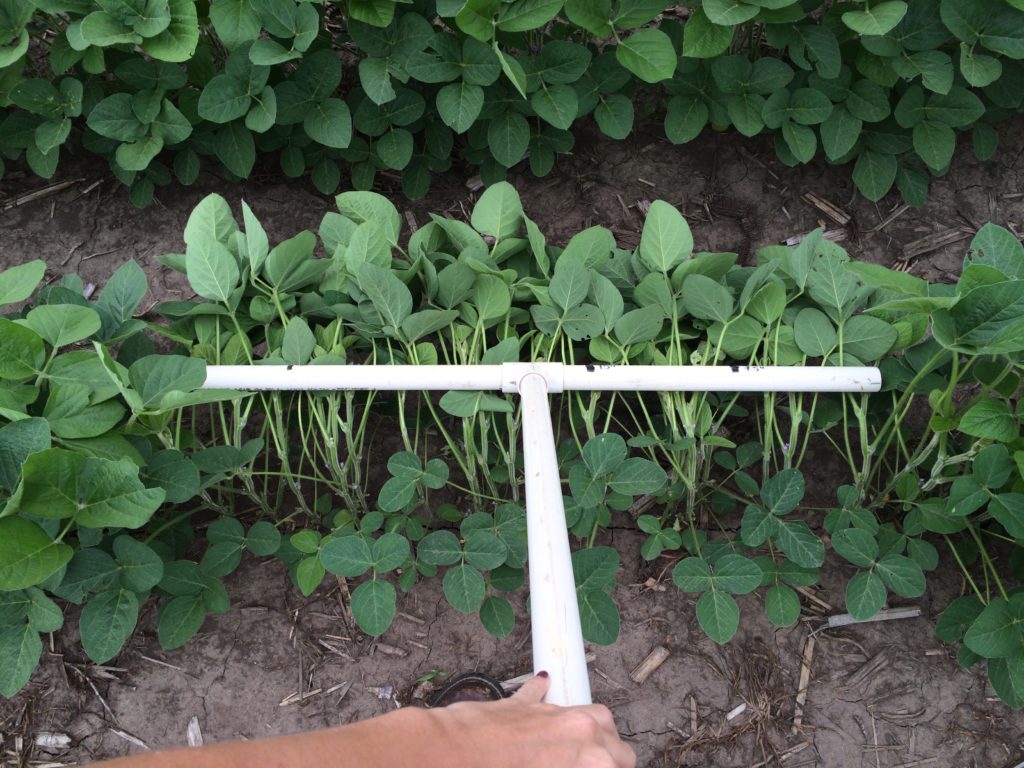
Taking a stand-count
Quality testing
Samples of each batch packaged are collected throughout the packaging process and that’s where I came in! Those seeds came into our quality lab where they were evaluated to ensure they reached Monsanto’s quality standards. I looked at things such as appearance, seed size, seed coat durability, germination rates, and purity of the variety (we have over 20 different varieties.)
The quality data we collected was used to make sure our packages were labeled correctly and to analyze trends that could indicate if our conditioning equipment wasn’t running to full efficiency. It was my job to make sure all of this happened according to AOSA procedures and that issues were handled correctly.
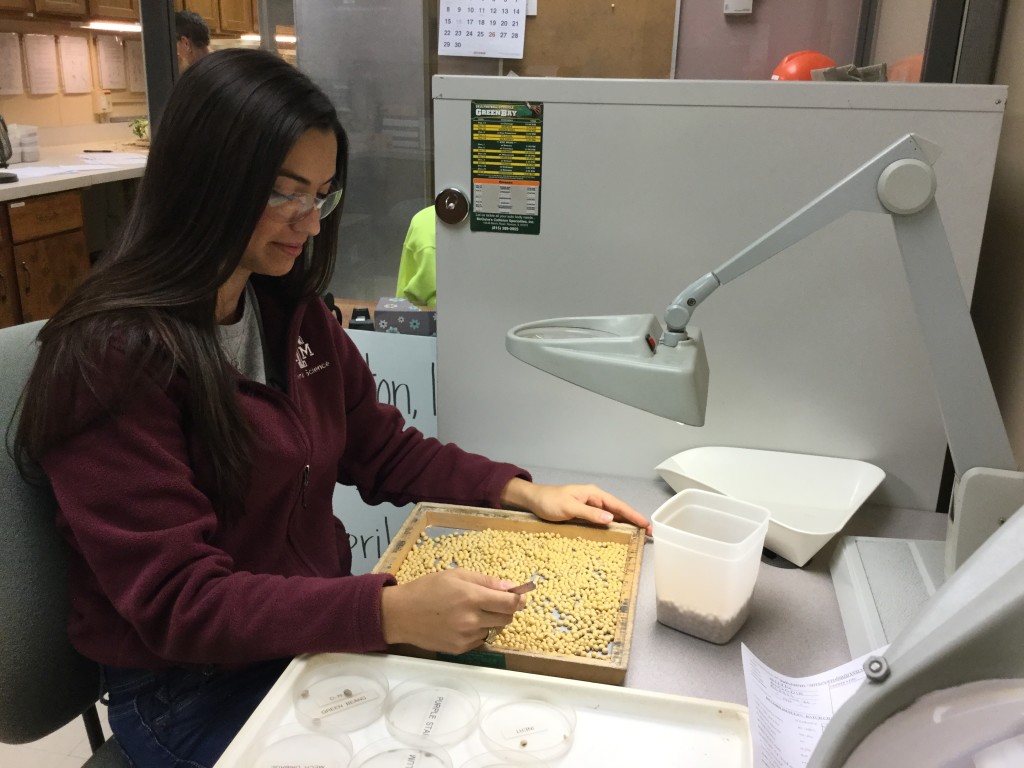
Performing a purity test on a sample of seed
Now what?
Once the beans had been conditioned, packaged, and fully vetted by our lab, they were ready for farmers! Most of our seed was distributed to seed dealers who sell to our farmer customers. Those beans would be grown “commercially” and harvested for use in animal feed and other products. However, some of the seed is reserved for our farmer growers who plant it again to produce seed for the next year!
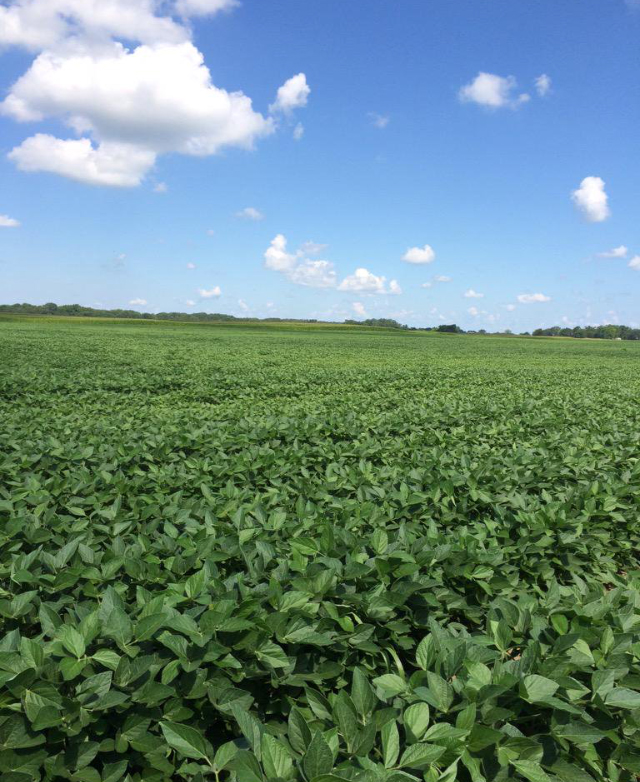
Soybean seed production field
Is there anything else you you’d like to know? Comment and ask me below!
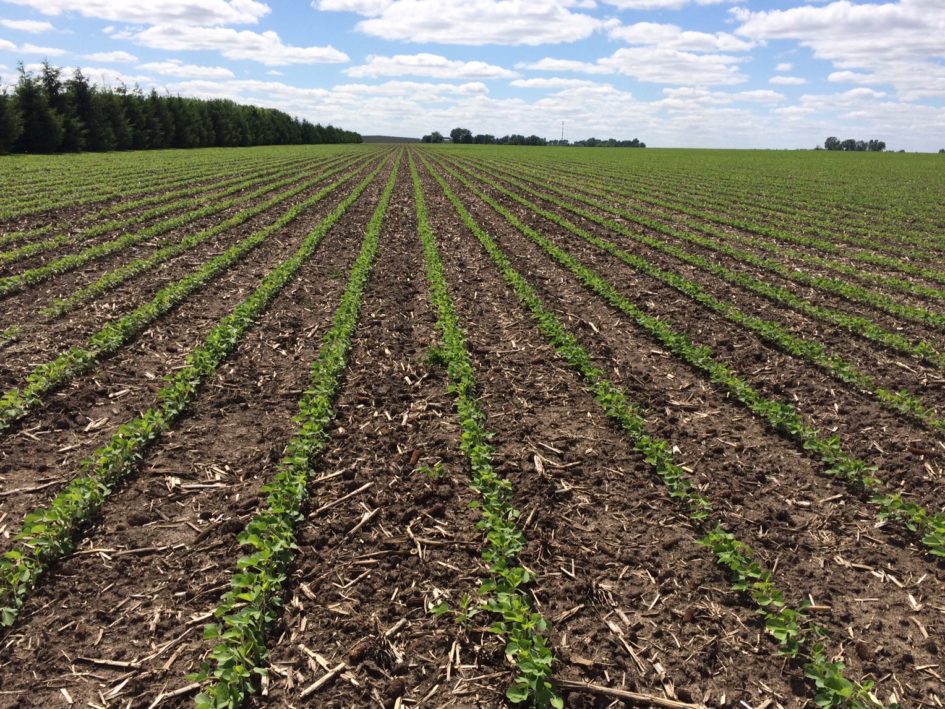
July 7, 2016 at 10:06 PM
Very interesting article. Sure glad to see this unused Funks seed corn plant being put to such a good use.
May 10, 2019 at 3:59 AM
mention the hybrid seed production in soya bean include the steps
December 26, 2019 at 12:11 PM
Hi Margaret, I’m not as familiar with soybean line development, but I do know soybeans are varietal and not hybrids. I assume at some point in the early stages, crosses are being tediously made between 2 varieties, but father along in development they are self pollinated.